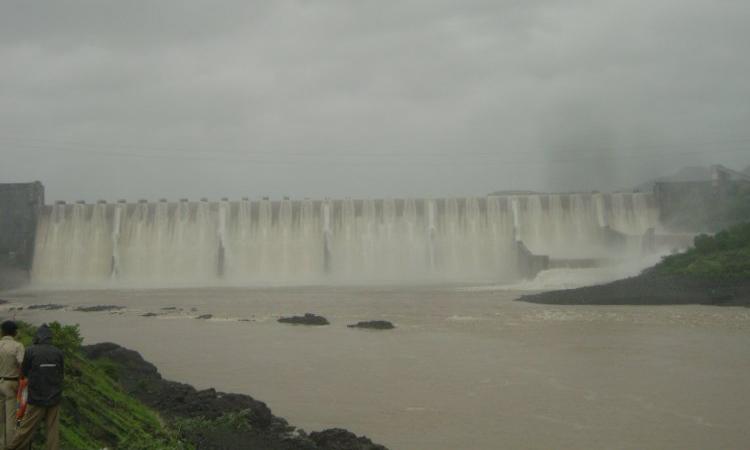
Sardar Sarovar dam fills up while ignoring thousands in submergence area
As the rains arrived this year, the central government decided to fill up the Sardar Sarovar dam to its full height of 139 m for the first time since its construction was completed in 2017. The government has claimed since 2014, that every single family from the dam’s submergence zone has been rehabilitated at new locations. However reports say that at least 6,000 families in Madhya Pradesh - based on the state government’s own estimates - have been living in the soon-to-be submerged area in the state, waiting to receive final rehabilitation payments. Moreover, the central government knew about these families when it decided to fill the dam to capacity. The affected families could not leave the area, as most of them received alternate land for housing, but the cash compensation was too little for many to build houses there. (India Spend)
First phase of Ken-Betwa riverlinking project could threaten Panna Tiger Reserve, says report
According to a report by the Supreme Court-appointed Central Empowered Committee (CEC), the first phase of the Ken Betwa riverlinking project could be a threat to the Panna Tiger Reserve’s status as a protected area for tigers. The report observed that the project will lead to a loss of wildlife habitat of 10,500 hectares because large tracts of forests will be submerged and fragmented. Moreover, the committee found that the alternatives to achieving the project objectives - of providing irrigation and drinking water supply to the water-scarce Bundelkhand region - haven’t been explored by the Centre. The CEC has now recommended a detailed study to examine whether the mitigative measures proposed by the Wildlife Board effectively offset the adverse impacts of the riverlinking project. (Hindustan Times)
Environment Ministry to study 13 rivers in the country
After studying water quality in the Ganga river, the Environment Ministry will undertake a study of 13 Indian rivers, including the Krishna river. This is the first time that a study of the Krishna is being undertaken, to ascertain the ground reality along the river path, the loss of natural forest cover, area under cultivation, usage of water and dependence on the river for other work. The riparian forest is essential as it acts as a sponge and water-holding source. Unlike the Ganga, where water comes from the glaciers, the Krishna and other South Indian rivers are dependent on the monsoons. The report will play a deciding factor in future projects planned by the state governments in South India. (The New Indian Express)
Mekedatu project to take land from Cauvery Wildlife Sanctuary
As per a pre-feasibility report for the Mekedatu Balancing Reservoir project, of the 52.52 square kilometres needed for the project, 31.81 square kilometres falls in the Cauvery Wildlife Sanctuary, while another 18.69 square kilometres is adjacent forest land. Just 2.01 square kilometres is revenue or private land. The Rs 9,000 crore project aims to provide an additional 4.75 tmc feet of drinking water to Bengaluru Metropolitan Region and generate 400 MW of energy. However, environmentalists fear that the project will cause large-scale, irreversible damage to the ecosystem in the wildlife sanctuary, as the project will submerge existing forest land along the river, thus cutting off many wildlife and elephant migratory routes. (The HIndu)
Jharkhand CM wants dilution of Management Plan for sustainable mining
The Environment Ministry will soon form a committee to explore the prospect of opening up the no-mining zones in Saranda and Chaibasa in West Singhbhum district of Jharkhand for sustainable iron ore mining, on the request of the Jharkhand Chief Minister. In June 2018, the Management Plan for Sustainable Mining (MSPM) was formed, dividing the Saranda forest into three zones — mining zone I, mining zone II and a conservation zone or no-mining zone. The no-mining zone has mining proposals from SAIL, JSW Group, Vedanta and others. As per the Jharkhand Chief Minister, the MSPM has affected SAIL financially, which had made huge investments to mine the conservation zone in the region. (Down to Earth)
This is a roundup of important news published between September 4 - 9, 2019. Also read policy matters this week.
/articles/thousands-ignored-while-sardar-sarovar-dam-fills-capacity